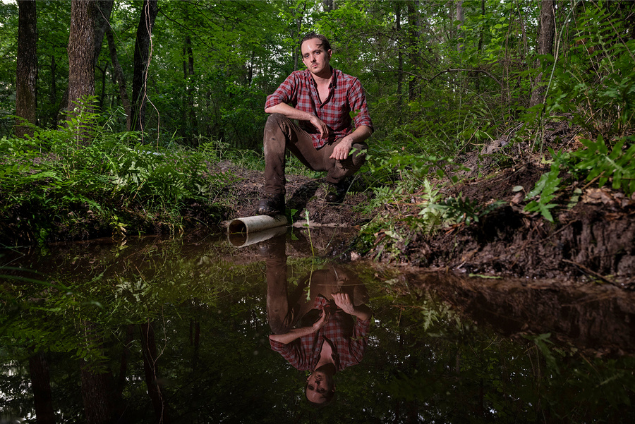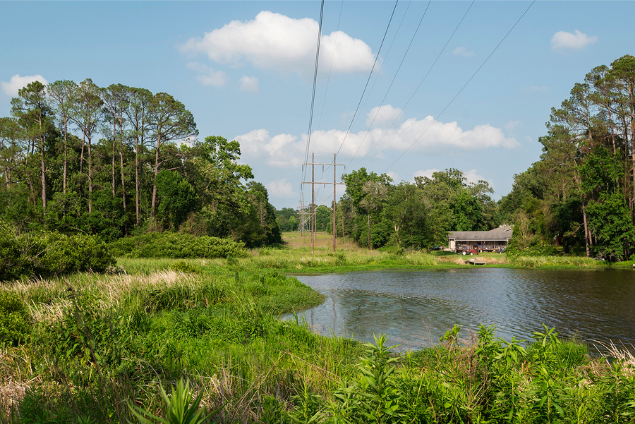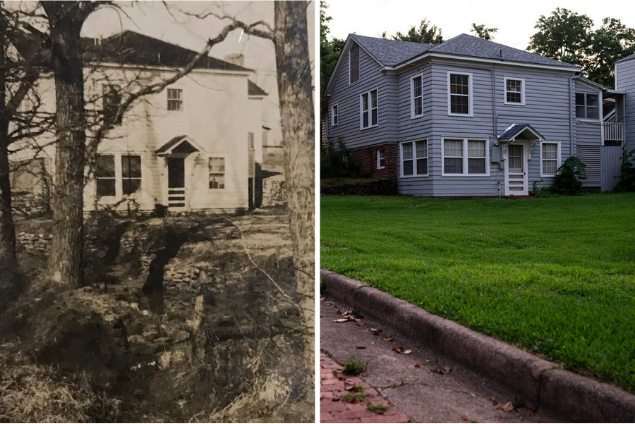
When it comes to the health of our watersheds, state, local and federal officials on both sides of the aisle agree: Habitat restoration and water preservation are integral parts of protecting our water supply.
Where are East Texas’ water sources? The creek beds you might see around the countryside or near your property are remnants of the much larger flood plains and tributaries of East Texas. Most of our cities are located near these water sources, such as Saline Creek near Noonday, where recent rains set record water levels.
Alluvium plains shaped by our waterways collect surface water and are often dammed to form bodies of water, such as Lake Palestine.
Many of the cities and homes around East Texas are built on flood plains. Without management, the foundations of homes can shift. Gardens can suffer lower yields and worsen the increase of flooding. As urbanization spreads and more land is taken up by concrete, once porous floodplains become hazardous roadways as high volumes of water sweep in with nowhere to go.
With Lake Palestine’s vertical pumps hauling up to 30 million gallons of water a day across East Texas, what can one person or household do? Some East Texans are discovering smart ways to manage and preserve their property’s water sources by enhancing what Mother Nature has already provided.

Garrat Carson is a 25-year-old UT Tyler graduate and Tyler resident. Having worked for an environmental credit company, he used his experience in watershed restoration to develop a well system which improves the water supply for his family and ultimately, all Tyler residents.
“I’ve lived on this property my whole life. There was always a bunch of water back there, but it wasn’t until I was older that I got the skills I needed to create this spring,” he said.
While there’s nothing an East Texan loves more than renting a backhoe to move dirt, most of Carson’s project has been done by hand. Creating these types of watersheds doesn’t require heavy machinery. Instead, it works on a simple principle: Water takes the path of least resistance.
Having started around three years ago, Carson has gradually created a spring from a wet spot on a hill in the forest behind his house. With careful observation, Carson dug out a system of pools into the hillside, following the sinews of the stream bed. He used elevation to divert the water of one pool to the lower pools.

Carson’s system of springs continues to grow with the increase from 2021 winter and spring rainfall. Under his care, what started as a wet spot on his parents’ property became a thriving spring. Like a sculptor revealing a form from the marble, Carson brought out what’s already there.
Carson does have one caveat: “Don’t just start digging. It’s really easy to do more harm than good. The way water flows doesn’t always work like you think it does.” Improper hydrology work can cause the spring to move or create a secondary spring.
Springs occur naturally, but property owners often exhaust these resources, causing the water to move elsewhere. “I haven’t tapped into the spring yet. The system needs time to develop. Tapping into a spring too early can negatively affect the site,” said Carson.

What are signs of a healthy watershed? Native foliage like ferns and Triodanis perfoliata, also called Venus Looking Glass, will spread around the pools as the years pass. This helps build the nearby soil, which collects more water.
It might appear as though Carson is tampering with nature, but he’s working with — not against — the water source and ecosystem, and that takes time. “A lot of people make the mistake of trying to rush the process by introducing mosquito fish or other predators that mess up the ecosystem. Be patient. Eventually a bird with eggs on its legs will bring fish,” said Carson.
As Carson exercised patience, nature brought its benefits. Insects and important amphibians like the Dwarf Salamander colonize the shallow bodies of water. Beneficial bacteria and other microorganisms create a natural filter. The water is allowed to flow into the nearby wetland which then flows into Lake Palestine.

Though Carson is a professional, other property-owning East Texans have followed suit to boost the local water supply and create a coveted landscape.
One Tyler couple who wishes to remain anonymous reported the changes they have made on their property just north of Tyler. By letting the creek flow from their dammed pond, filling a once dry creek bed and bringing back the riparian habitat at the water’s edge, they are restoring their watershed.
Not only has their work helped restore the water table, the buildings on their property all draw from this water source. “At first it was for the looks,” they said. “During the winter freeze, we grew a greater appreciation for water. At one point, we were drawing water directly from the lake when our pipes burst.”
The couple said the restored water has rewarding aesthetics. “You want to look at the water. It’s like being in another country. It’s really a lot of fun, and it’s brought our family closer together. Water has become the centerpiece of the whole property.”

Elsewhere, Hidden Hill Lake, a private community near the Neches river, has used their Home Owners Association to restore their spring-fed lake. The association uses volunteers to remove invasive water hyacinths and allows beavers to build a wetland directly behind the lake, collecting and filtering water.
But what if you don’t own land? Reducing your use of pesticides is a good start, as well as installing rain gardens in low spots. By planting perennials and native grasses, these gardens are a cost effective solution to filtering and reducing runoff.
Using eco-friendly laundry detergent is another effective way to manage the health of our watersheds, especially if you have an aerobic septic system.
Detergents and other harsh chemicals recycled by these water-saving systems can leach into the ground and contaminate the water table, eventually reaching downstream and ending up in the water supply.
What happens when natural springs are diverted? Historic areas like Tyler’s Azalea District are often filled with natural springs and hillsides that coalesce into natural reservoirs and creeks. Homeowner Bob Gentry and his son, Ellis, have been helping manage their family home, a historic house in Tyler built in 1920.

“Once, the water was piped into the creek which had naturally formed behind the house,” Ellis Gentry said, “At one point, the creek held so much water, it could easily fit a small boat. Fifteen years ago, the city of Tyler redirected the flow of water from the naturally occurring creek to the city’s storm drain.”
With recent rains, a secondary spring has begun forming under the sidewalk of the Gentry’s home, where soil erosion created a place for water to collect. The water also seeped into the basement. Secondary springs or the movement of existing springs happen most often when the natural hydrology of the soil is interrupted. Managing water sources to avoid secondary or moving springs will become more important than ever as Tyler grows and rains fall more heavily.

As our climate changes and the East Texas region faces more rainy days, individual water management will become prominent out of necessity for renters and homeowners alike.
By practicing intuitive water management at the personal level, we can all do our part to make the best of a precarious situation.
Govinda Dass is a Tyler native and University of Texas at Austin graduate. You can read about the house “in the woods” of northwest Tyler where he was born, raised, and still lives in the April 2019 Out of the Loop storytelling transcript: “Holding on to Tyler’s Green Spaces.” Last summer, he launched a new community-driven organization called Ark Habitat Restoration to mobilize Tyler residents to plant and harvest native seeds.
Deep Indigo Collective is a visual storytelling resource supporting news outlets reporting on the local impacts of environmental threats and the climate crisis. As a 501(c)(3) organization, Deep Indigo is proud to produce original visual journalism on behalf of our editorial partners across the United States.
Thanks for reading this story. Just one more thing. If you believe in the power of local journalism here in Tyler, I'm hoping that you'll help us take The Loop to the next level.
Our readers have told us what they want to better understand about this place we all call home, from Tyler's north-south divide to our city's changing demographics. Power, leadership, and who gets a seat at the table. How Tyler is growing and changing, and how we can all help it improve. Local arts, culture, entertainment, and food.
We can't do this alone. If you believe in a more informed, more connected, more engaged Tyler, help us tell the stories that need to be told in our community. Get free access to select Loop events, behind-the-scenes updates about the impact and goals of our work, and, above all, a chance to play a part in bringing more fresh, in-depth, unexpected journalism to Tyler.







